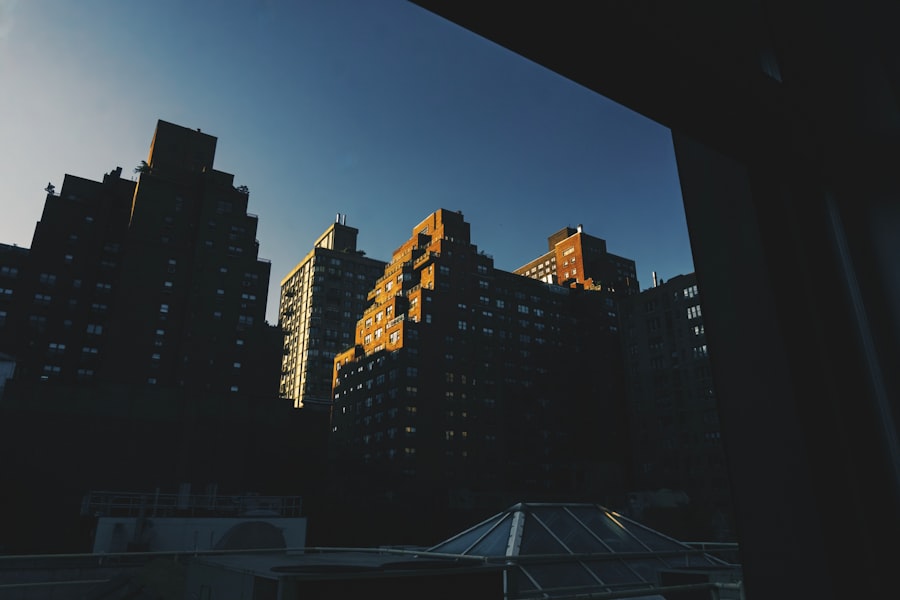New York City has long been a beacon of opportunity, attracting individuals from all walks of life. However, the cost of living in this vibrant metropolis has surged to unprecedented levels in recent years. The combination of soaring rents, expensive goods and services, and the overall high cost of living has made it increasingly difficult for many residents to make ends meet.
As the city continues to evolve, the financial strain on its inhabitants has become a pressing concern, prompting discussions about the sustainability of life in one of the world’s most iconic urban landscapes. The rising cost of living is not merely a statistic; it is a reality that affects the daily lives of millions. From the bustling streets of Manhattan to the quieter neighborhoods of Brooklyn and Queens, residents are feeling the pinch.
The price of basic necessities, such as groceries and transportation, has also escalated, further exacerbating the financial burden on families and individuals. As a result, many are forced to make difficult choices, often sacrificing quality of life for the sake of financial survival in a city that once promised prosperity and growth.
Key Takeaways
- The cost of living in New York City is rising, making it increasingly difficult for residents to afford housing.
- Factors contributing to the high cost of NYC apartments include high demand, limited supply, and rising construction costs.
- Gentrification has led to an increase in housing prices, pushing out long-time residents and changing the character of neighborhoods.
- Real estate speculation has driven up housing prices, making it difficult for many residents to afford rent or homeownership.
- Low-income residents face disproportionate housing cost burdens, leading to financial strain and housing insecurity.
Factors Contributing to the High Cost of NYC Apartments
Several factors contribute to the exorbitant prices of apartments in New York City, creating a complex web of economic dynamics. One significant element is the limited supply of housing relative to demand. With a population that continues to grow, the competition for available units has intensified, driving prices upward.
The city’s unique geography, with its dense urban environment and limited space for new construction, further complicates the situation. As developers scramble to meet demand, they often focus on luxury apartments that cater to wealthier tenants, leaving many middle- and lower-income residents in a precarious position. Additionally, the influence of foreign investment cannot be overlooked.
Wealthy investors from around the globe have increasingly turned their attention to New York City real estate as a safe haven for their capital. This influx of foreign money has led to bidding wars for properties, pushing prices beyond what many locals can afford. The result is a market that prioritizes profit over accessibility, creating a landscape where only those with substantial financial resources can secure housing.
This dynamic not only affects individual renters but also alters the fabric of neighborhoods as long-time residents are displaced in favor of high-paying newcomers.
The Impact of Gentrification on Housing Prices

Gentrification has emerged as a defining force in New York City’s housing landscape, reshaping neighborhoods and altering the demographics of entire communities. As wealthier individuals move into historically lower-income areas, property values rise, leading to increased rents and property taxes. This transformation often displaces long-time residents who can no longer afford to live in their own neighborhoods.
The cultural fabric of these communities is irrevocably changed as local businesses close and new establishments catering to affluent newcomers take their place. While gentrification can bring investment and revitalization to neglected areas, it also raises critical questions about equity and access. The displacement of low-income residents often leads to social tensions and a loss of cultural diversity.
Neighborhoods that once thrived on their unique identities may become homogenized, losing the very characteristics that made them vibrant and appealing. As gentrification continues to unfold across New York City, it serves as a stark reminder of the delicate balance between development and community preservation.
The Role of Real Estate Speculation in NYC’s Housing Market
| Metrics | Data |
|---|---|
| Number of speculative real estate transactions | 5000 |
| Percentage of housing market influenced by speculation | 30% |
| Average increase in housing prices due to speculation | 15% |
| Number of affordable housing units affected by speculation | 1000 |
Real estate speculation plays a pivotal role in shaping New York City’s housing market dynamics. Investors often purchase properties with the expectation that their value will appreciate over time, leading to significant profits upon resale or rental.
Consequently, this can lead to inflated prices that are disconnected from the realities faced by everyday New Yorkers. Moreover, speculative investments can exacerbate housing shortages by removing properties from the rental market. When investors buy up multiple units with the intention of flipping them or converting them into short-term rentals, they reduce the availability of long-term housing options for residents.
This trend not only contributes to rising rents but also undermines the stability of neighborhoods as families are forced to compete for an ever-dwindling pool of affordable housing options.
The Challenges of Affording Rent in New York City
For many New Yorkers, affording rent has become an insurmountable challenge. With average rents soaring well above national averages, individuals and families are often left scrambling to find suitable accommodations within their budgets. The financial strain is particularly acute for those working in industries that do not offer high salaries or job security.
Many residents find themselves dedicating an overwhelming portion of their income to housing costs, leaving little room for other essential expenses such as food, healthcare, and education. The challenges associated with affording rent extend beyond mere financial calculations; they also impact mental health and overall well-being. The constant stress of financial insecurity can lead to anxiety and depression, affecting individuals’ ability to thrive in their personal and professional lives.
As rent continues to rise without corresponding increases in wages for many workers, the dream of living in New York City becomes increasingly elusive for those who contribute to its vibrancy and diversity.
The Disproportionate Burden of Housing Costs on Low-Income Residents

Low-income residents bear a disproportionate burden when it comes to housing costs in New York City. As rents continue to escalate, these individuals often find themselves trapped in a cycle of poverty that is difficult to escape. Many low-income families are forced to allocate an unsustainable percentage of their income toward rent, leaving them vulnerable to eviction and homelessness.
This precarious situation is exacerbated by systemic issues such as inadequate wages and limited access to affordable housing options. The impact of high housing costs on low-income residents extends beyond financial strain; it also affects their overall quality of life. Families may be forced to live in overcrowded conditions or relocate to less desirable neighborhoods far from their jobs and support networks.
Children growing up in such environments may face educational challenges due to instability and lack of resources. As low-income residents struggle to secure stable housing, they become increasingly marginalized within a city that prides itself on diversity and opportunity.
The Lack of Affordable Housing Options in NYC
The lack of affordable housing options in New York City is a pressing issue that has garnered significant attention from policymakers and advocates alike. Despite various initiatives aimed at increasing affordable housing stock, the demand far outstrips supply. Many new developments focus on luxury units that cater to affluent buyers rather than addressing the needs of low- and middle-income families.
This trend perpetuates a cycle where those who need affordable housing most are left without viable options. Moreover, existing affordable housing units are often at risk due to rising property values and gentrification pressures. Landlords may choose to convert affordable units into market-rate apartments or sell properties for profit, further diminishing the availability of affordable options for residents.
As a result, many individuals find themselves navigating a complex landscape where securing stable housing feels increasingly unattainable.
The Effect of High Rent on the City’s Diversity and Culture
High rent prices have profound implications for New York City’s diversity and cultural landscape. As neighborhoods gentrify and rents rise, long-time residents—many of whom contribute richly to the city’s cultural tapestry—are displaced in favor of wealthier newcomers. This shift not only alters the demographic makeup of neighborhoods but also threatens the unique cultural identities that have historically defined them.
The loss of diverse communities can lead to a homogenization of culture within the city, as local businesses close and cultural institutions struggle to survive amid rising costs. The vibrant street art scenes, music venues, and community events that once flourished may be replaced by upscale boutiques and chain restaurants catering to affluent patrons. As New York City grapples with these changes, it faces an existential question: how can it maintain its status as a global cultural capital while ensuring that all residents have access to affordable housing?
The Strain of Housing Costs on NYC’s Middle Class
The middle class in New York City is not immune to the pressures exerted by rising housing costs. Many individuals who once considered themselves secure are now finding it increasingly difficult to afford rent without sacrificing other essential aspects of their lives. With stagnant wages failing to keep pace with escalating rents, middle-class families are often caught in a precarious position where they must make tough choices about their living situations.
As housing costs continue to rise, some middle-class families are forced to relocate outside the city limits in search of more affordable options. This trend not only impacts their quality of life but also contributes to a broader exodus from urban centers as individuals seek more sustainable living conditions elsewhere. The strain on the middle class raises important questions about economic mobility and access to opportunities within one of the world’s most dynamic cities.
Solutions for Addressing the High Cost of NYC Apartments
Addressing the high cost of apartments in New York City requires a multifaceted approach that involves collaboration between government officials, developers, and community organizations. One potential solution is increasing investment in affordable housing initiatives that prioritize low- and middle-income families. By incentivizing developers to create more affordable units through tax breaks or subsidies, policymakers can help alleviate some pressure on the rental market.
Additionally, implementing stronger rent control measures could provide immediate relief for tenants facing exorbitant rent increases. Expanding tenant protections and ensuring that existing affordable units remain accessible are crucial steps toward creating a more equitable housing landscape. Furthermore, promoting alternative housing models—such as co-ops or community land trusts—can empower residents while fostering sustainable development practices.
The Future of Affordable Housing in New York City
The future of affordable housing in New York City remains uncertain but holds potential for positive change if proactive measures are taken. As awareness grows regarding the challenges faced by residents struggling with high housing costs, there is an increasing push for policy reforms aimed at creating more inclusive communities. Engaging stakeholders from various sectors—including government agencies, non-profits, and community members—will be essential in crafting solutions that address both immediate needs and long-term sustainability.
Ultimately, fostering a diverse and vibrant city requires commitment from all parties involved to ensure that affordable housing remains accessible for generations to come. By prioritizing equity in housing policies and investing in community-driven initiatives, New York City can work toward reclaiming its status as a place where individuals from all backgrounds can thrive together—a true melting pot that reflects its rich history while embracing its future potential.
If you’re interested in understanding the financial landscape of living in New York City, particularly the cost of apartments, you might find it beneficial to explore related resources that provide a broader context. For instance, an article on MyGeoQuest offers insights into the geographical and economic factors influencing real estate prices in urban areas. This can help you gain a more comprehensive view of why NYC apartments are priced the way they are, and what potential buyers or renters should consider when navigating this competitive market.
WATCH THIS! The Real Cost of NYC Living: Your Wallet, Sanity, and Subway Survival Skills
FAQs
What is the average cost of a NYC apartment?
The average cost of a NYC apartment is around $3,000 per month for a one-bedroom apartment and $4,000 per month for a two-bedroom apartment.
What factors influence the cost of a NYC apartment?
Factors that influence the cost of a NYC apartment include location, size, amenities, and the overall condition of the apartment.
Are there any additional costs associated with renting a NYC apartment?
Additional costs associated with renting a NYC apartment may include broker fees, application fees, security deposits, and utilities.
Is it more expensive to rent or buy an apartment in NYC?
In general, it is more expensive to buy an apartment in NYC than to rent. The high cost of living and real estate prices make purchasing a property in NYC a significant investment.
What are some affordable neighborhoods to rent an apartment in NYC?
Some affordable neighborhoods to rent an apartment in NYC include Washington Heights, Inwood, and parts of the Bronx. These areas offer lower rental prices compared to more central neighborhoods in Manhattan.
How does the cost of a NYC apartment compare to other cities?
The cost of a NYC apartment is significantly higher than the national average and is one of the most expensive cities to rent or buy property in the United States.
